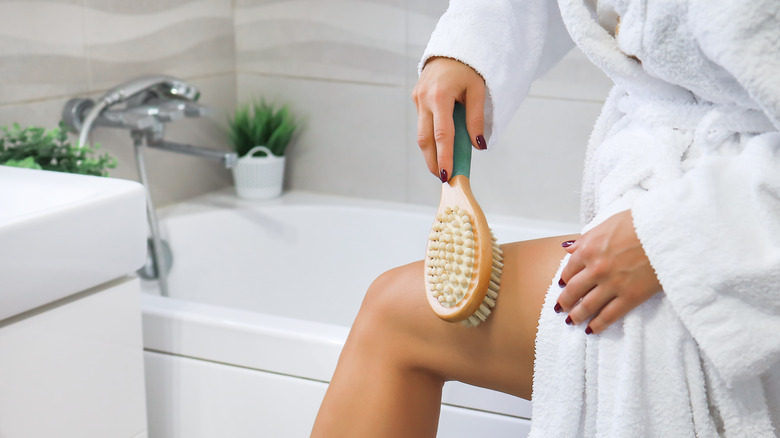How Often Should You Be Dry Brushing?
As simple as it may appear, dry brushing has become a popular aspect of many body care routines; more and more people are turning to dry brushing to elevate their skin. Commonly we only focus on the skin on our face, but the skin on our body also deserves care and attention. With the extra focus on our overall wellness in the last couple of years, this practice has grown in popularity. Cleveland Clinic explains that dry brushing is simply using a brush with dry and stiff bristles on the skin. This process can be part of an invigorating massage or an addition to your self-care routine.
Whether you believe in the benefits of dry brushing or just like the feeling it gives, there are certain factors to consider before picking up a brush. Moreover, any activity that puts extra strain on the skin has to happen with care. While resilient, we still need to be cautious not to dry brush excessively, as this can damage the skin. This self-care practice should not aggravate your skin, so you might need to limit the number of times you use a dry brush.
How many times should you dry brush?
To get all the benefits of dry brushing without the risk of injury, you need to limit the process to only a few times a week. Dr. Barbara Sturm, skincare brand founder and aesthetics doctor, explains to Woman & Home, "I recommend dry brushing two to three times a week in the morning — because of its invigorating effects — and on dry skin. Try to dedicate at least three to five minutes to body brushing." As beneficial as this practice can be, be aware of how often you put your skin through this process. Just like when you exfoliate, you don't want to stress your skin to the point where you are causing more damage than good.
Rengöra adds that some may want to go lower than this two to three-time-a-week rule. For example, if you have sensitive skin, you will want to try only dry brushing once a week since overly doing it on a delicate surface will lead to redness and skin irritation. So, you can attempt to go three to five times a week, so long as your skin doesn't show any signs of irritation. You also want to limit the number of times you dry brush if you have open wounds or cuts.
Benefits of dry brushing
Once you have your dry brushing routine figured out, you need to know why you are even dry brushing in the first place. While this practice may not provide all the benefits some fans claim, there are plenty of reasons to include it in your self-care routine. Andrée Jardin explains that dry brushing can help remove some of the dead skin cells on the body and can also help unclog pores and help give you smoother and softer skin in the process. When done correctly, it is also said to help stimulate circulation and the lymphatic system.
Grove adds that dry brushing also helps you with the rest of your routine down the line. Since it is an exfoliating activity, it helps prepare your skin for other products you may use afterward. For example, practicing dry brushing before applying lotion will help the product absorb more into the skin, so you'll get all the benefits. At the same time as you are removing the dead cells on top, practicing good body care afterward will help give your glowing and soft skin. Even if you put on a self-tanner, dry brushing before will make the product application smoother.


